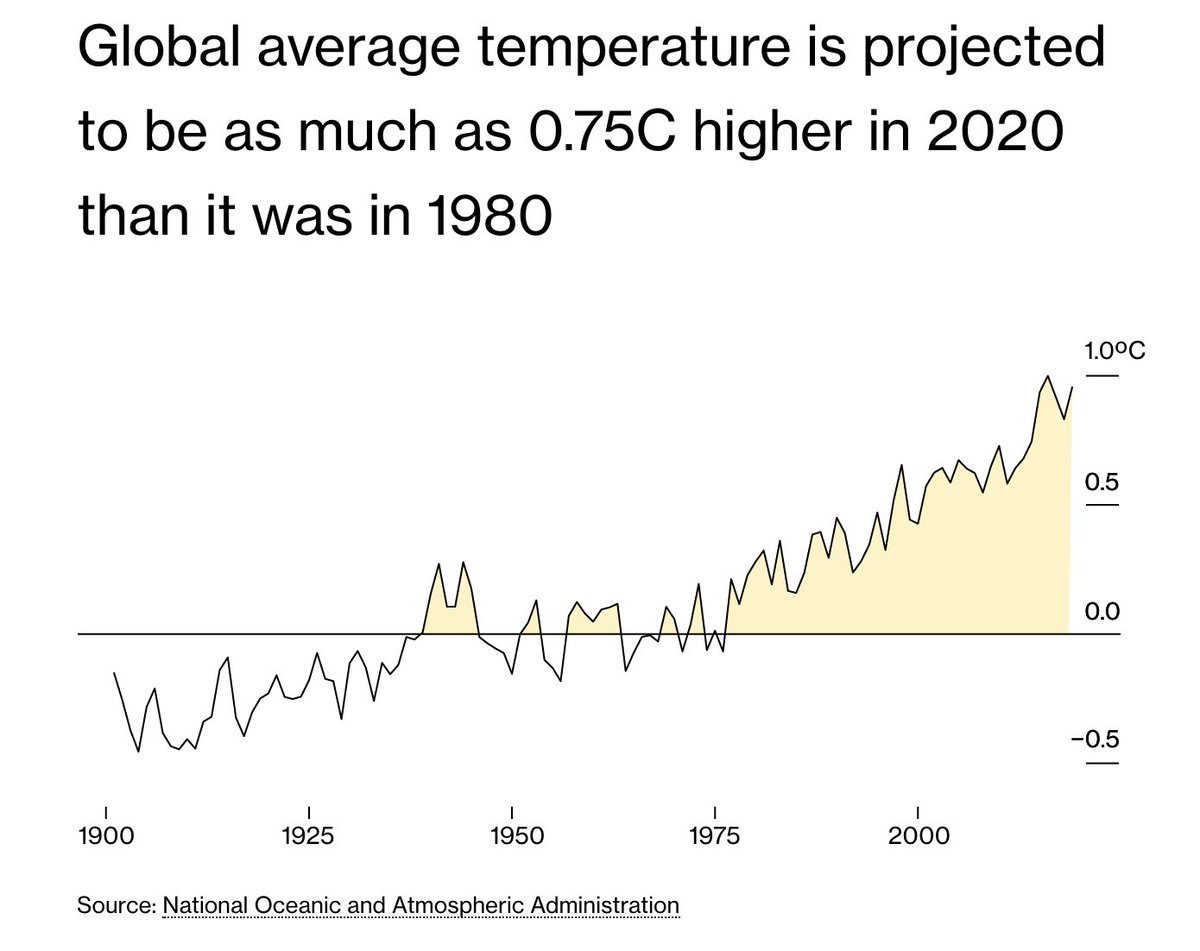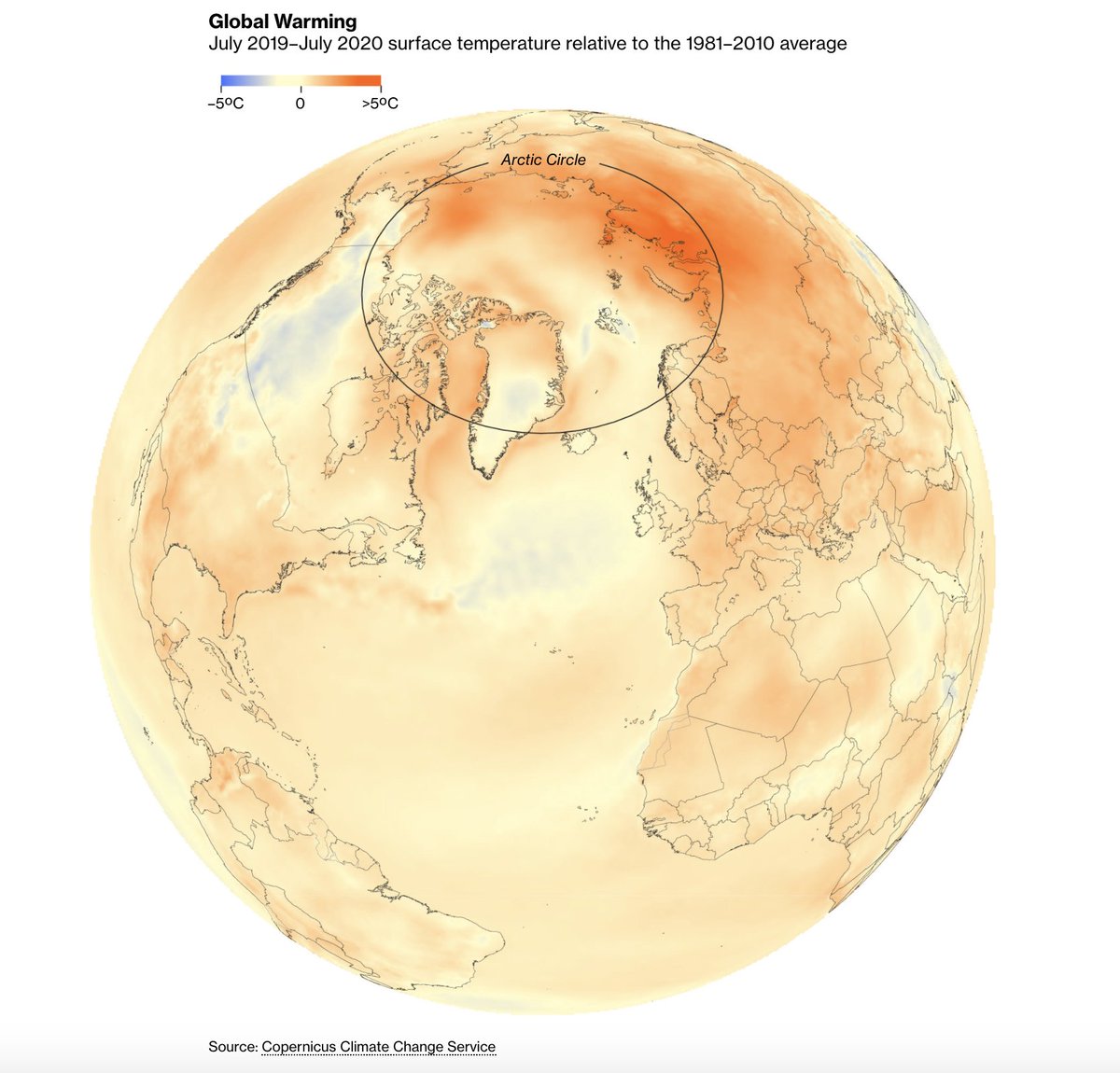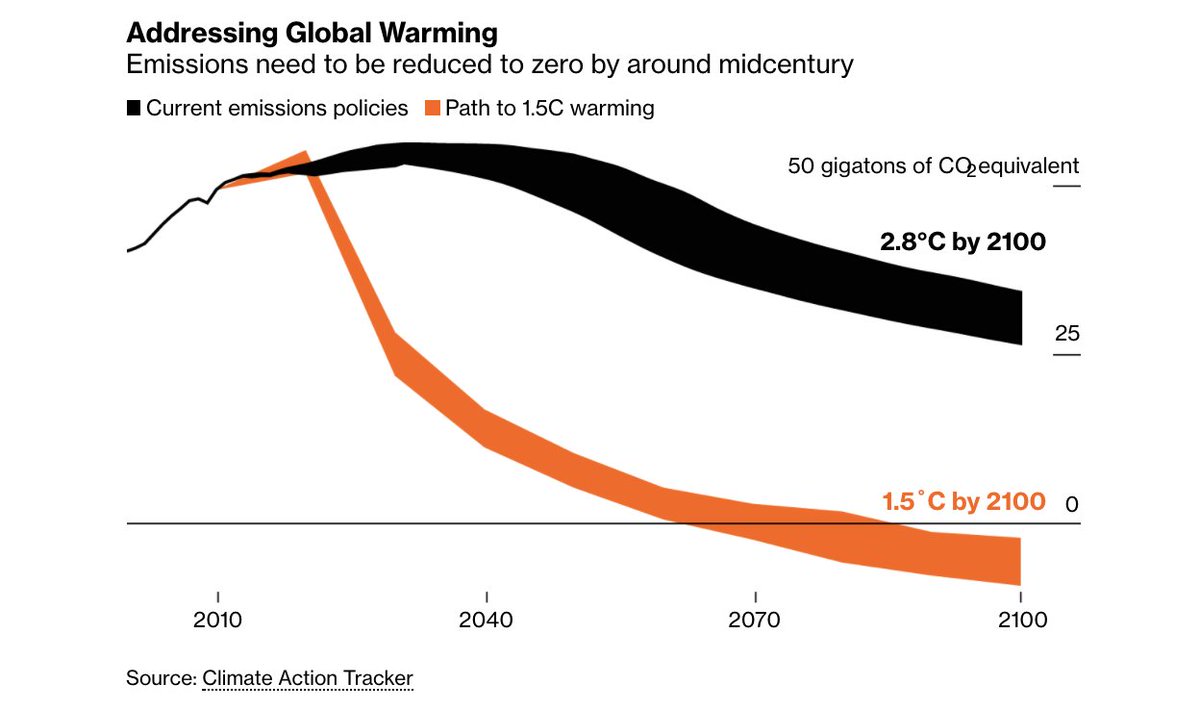
1/ Biden's goal to cut U.S. greenhouse gas emissions in half by 2030 will require sweeping changes in the power generation, transportation and manufacturing sectors.
It will also require a tremendous amount of land.
@merrill_dave reports: bloom.bg/3b7AzrV
It will also require a tremendous amount of land.
@merrill_dave reports: bloom.bg/3b7AzrV
2/ Right now, the U.S. energy sector uses about 81 million acres of land.
That estimate includes not only energy sources fueling the electric grid, but also transportation, home-heating and manufacturing.
That estimate includes not only energy sources fueling the electric grid, but also transportation, home-heating and manufacturing.
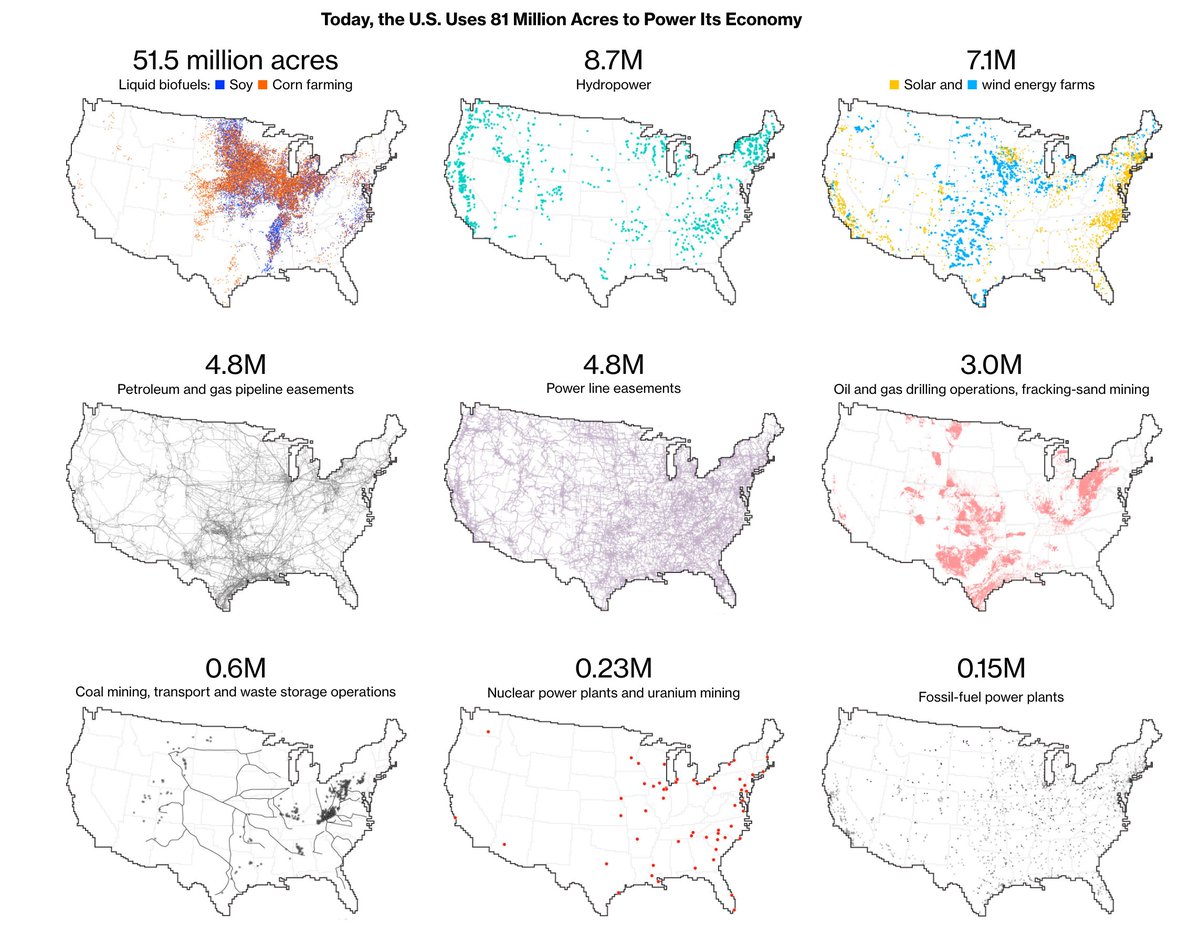
3/ Two-thirds of America's total energy footprint is devoted to transportation fuels produced from agricultural crops, primarily corn grown for ethanol.
It requires more land than all other power sources combined but provides just 5% of the nation's energy.
It requires more land than all other power sources combined but provides just 5% of the nation's energy.
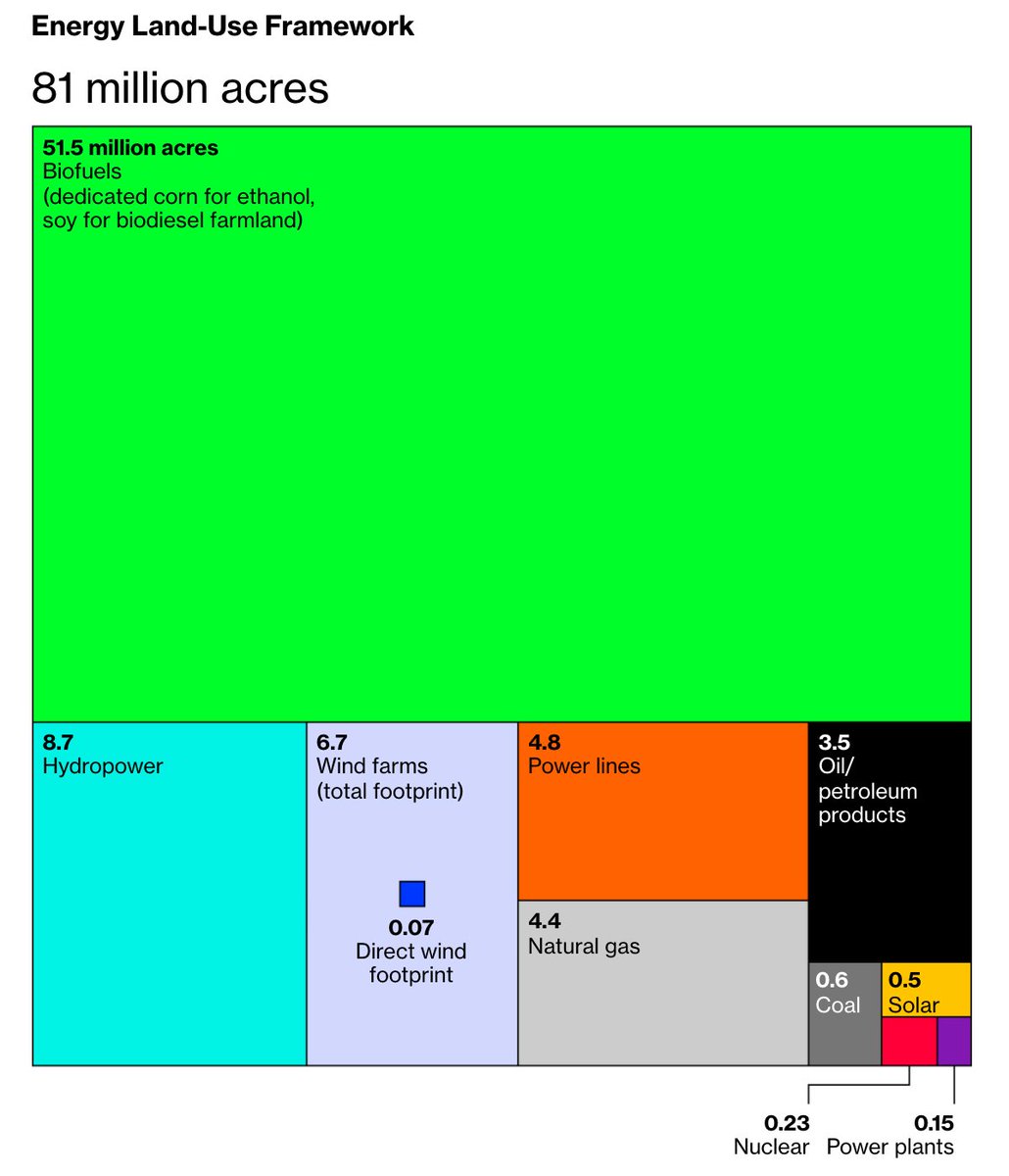
4/ Here's how 81 million acres of energy acres lumped together looks on a U.S. map.
The current energy footprint is about the size of Iowa and Missouri combined, covering roughly 4% of the contiguous U.S. states.
The current energy footprint is about the size of Iowa and Missouri combined, covering roughly 4% of the contiguous U.S. states.
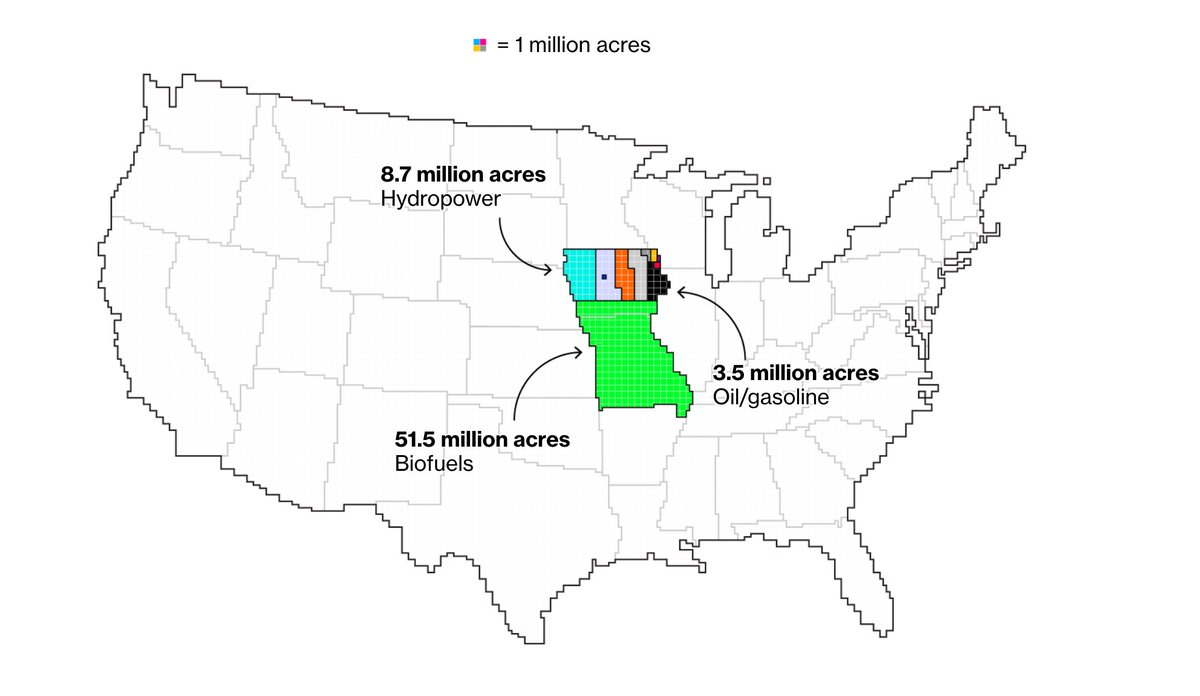
5/ @Princeton's Net-Zero America Project maps various pathways to reaching a carbon-free U.S. by 2050.
Each path has unique land-use challenges: bloom.bg/3b7AzrV
Each path has unique land-use challenges: bloom.bg/3b7AzrV
6/ The most land-intensive plan eliminates all fossil fuels and nuclear plants.
Wind and solar provide 98% of electric power by 2050. The U.S. energy footprint quadruples in size.
Wind and solar provide 98% of electric power by 2050. The U.S. energy footprint quadruples in size.
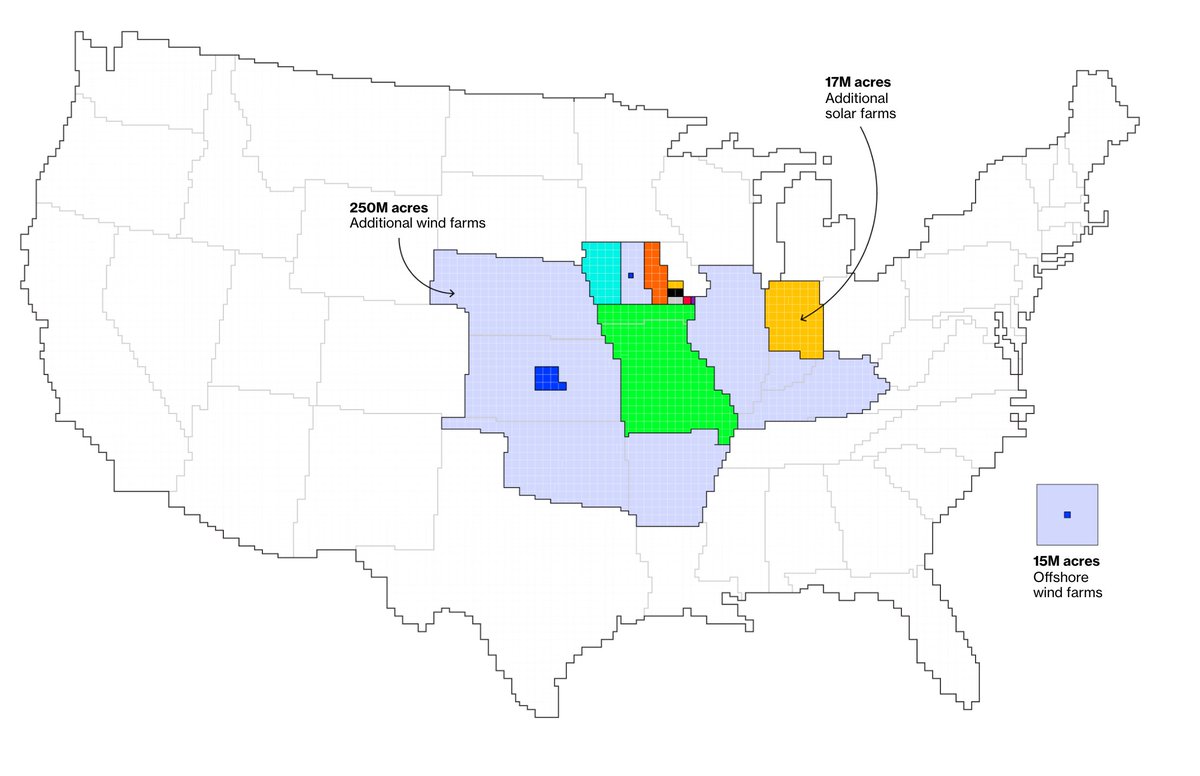
7/ Is there even enough open land to build 250 million acres of new wind farms?
The short answer is yes, according to estimates from the U.S. Department of Agriculture.
The short answer is yes, according to estimates from the U.S. Department of Agriculture.

8/ Add together all the land in the contiguous U.S. used for pasture, range and cropland, and you'd get 1.05 billion acres (pictured in yellow).
The Princeton study also estimates that 11% of electric power could come from offshore wind farms by 2050.
The Princeton study also estimates that 11% of electric power could come from offshore wind farms by 2050.
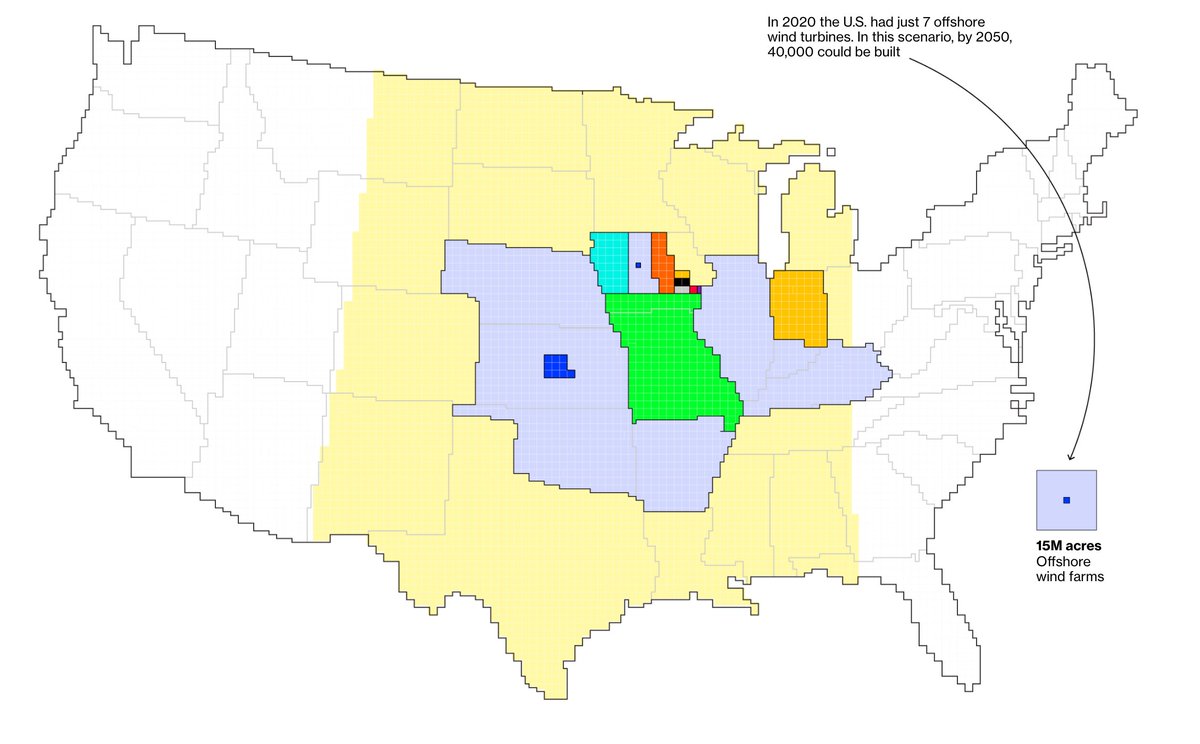
9/ If the U.S. wants a carbon-free economy by 2050 using the least amount of land, it will need to rely less on wind and solar and instead build hundreds of nuclear plants and natural gas plants outfitted with systems to capture carbon dioxide. 
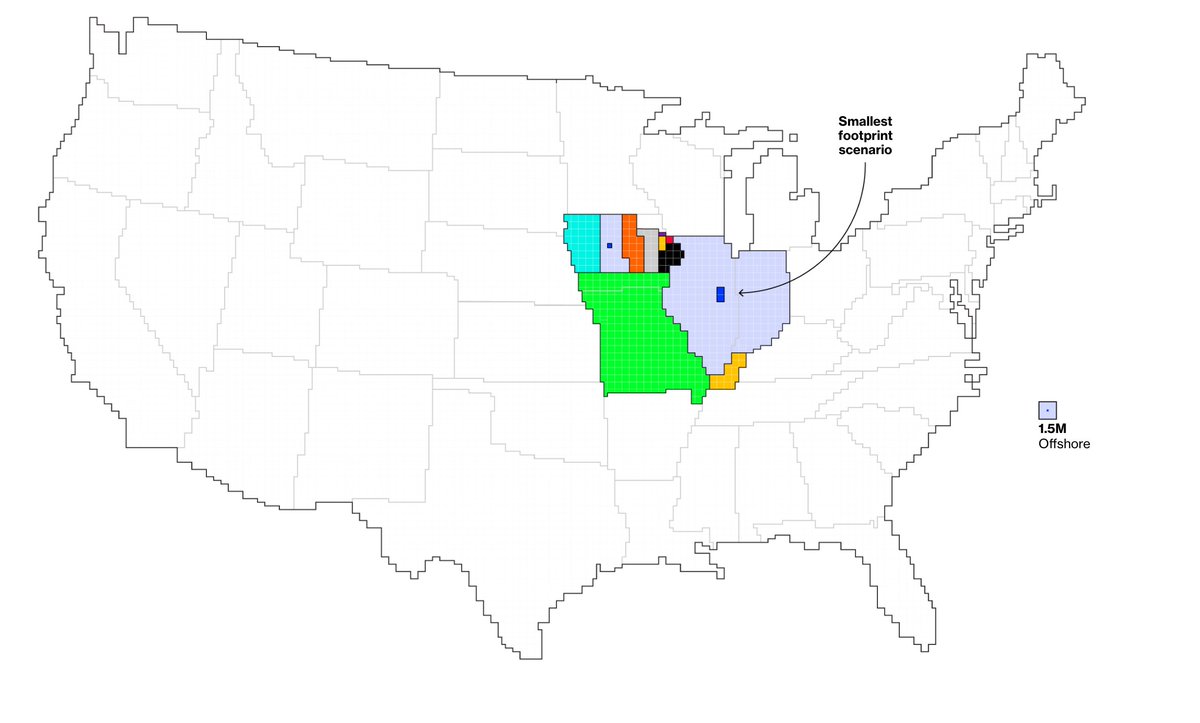
10/ In this model, wind and solar would contribute 44% of electricity generation, and 50% would come from nuclear plants and natural gas power plants with carbon-capture technology. 
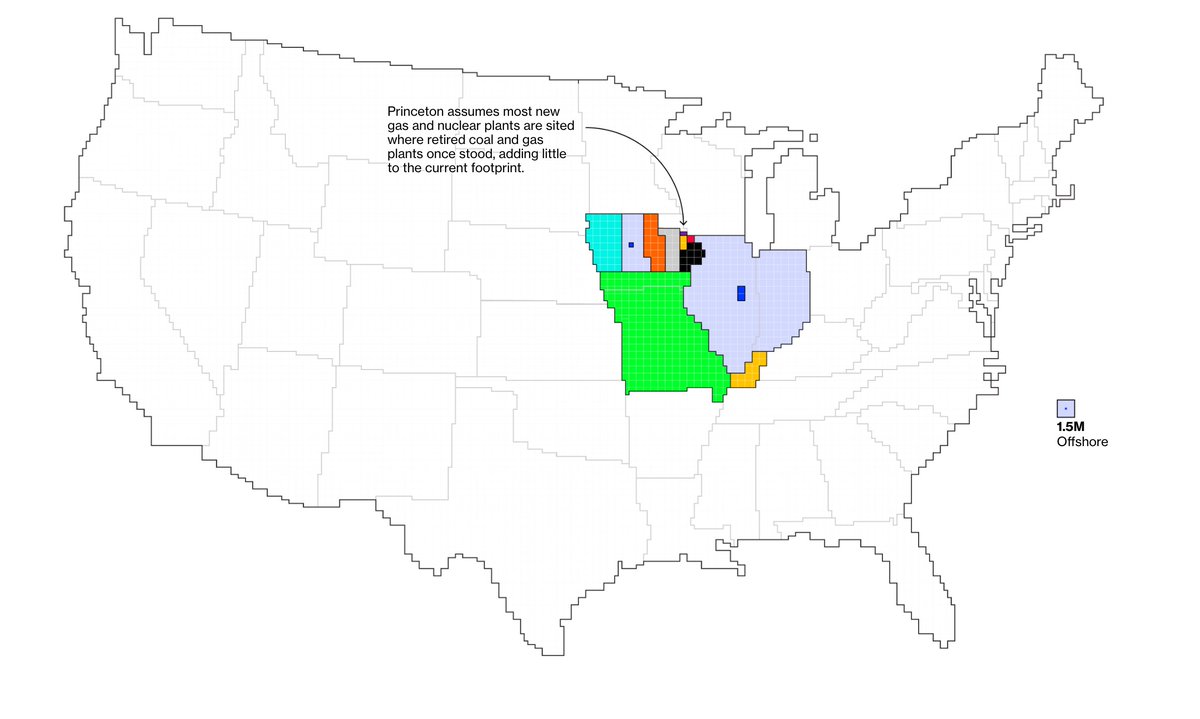
11/ To make 300 new natural-gas fired power plants emission-free, a network of carbon-capture pipelines and storage facilities would be built.
That would require land easements totaling 500,000 acres, about half the size of Rhode Island.
That would require land easements totaling 500,000 acres, about half the size of Rhode Island.
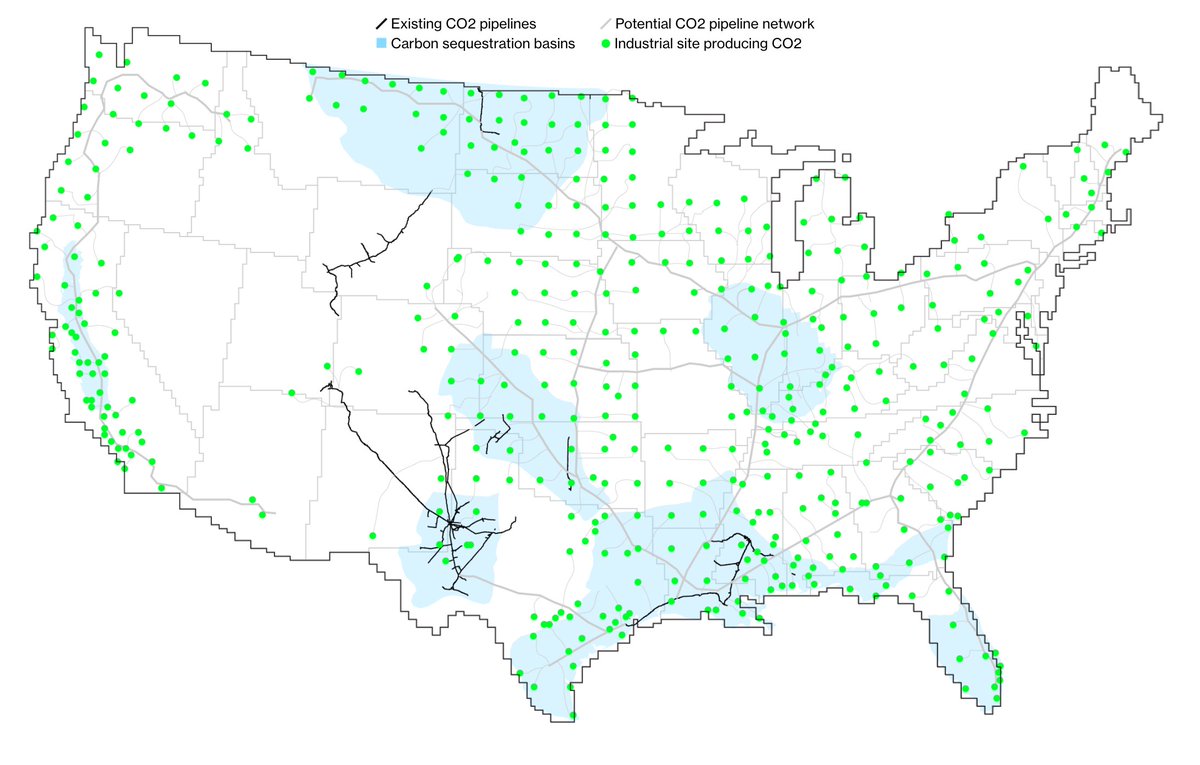
12/ The most difficult land-use challenge in any scenario may be building transmission lines.
In 2011, Obama created the Rapid Response Team for Transmission to speed the permitting of five Western transmission line projects. Only one is under construction so far.
In 2011, Obama created the Rapid Response Team for Transmission to speed the permitting of five Western transmission line projects. Only one is under construction so far.
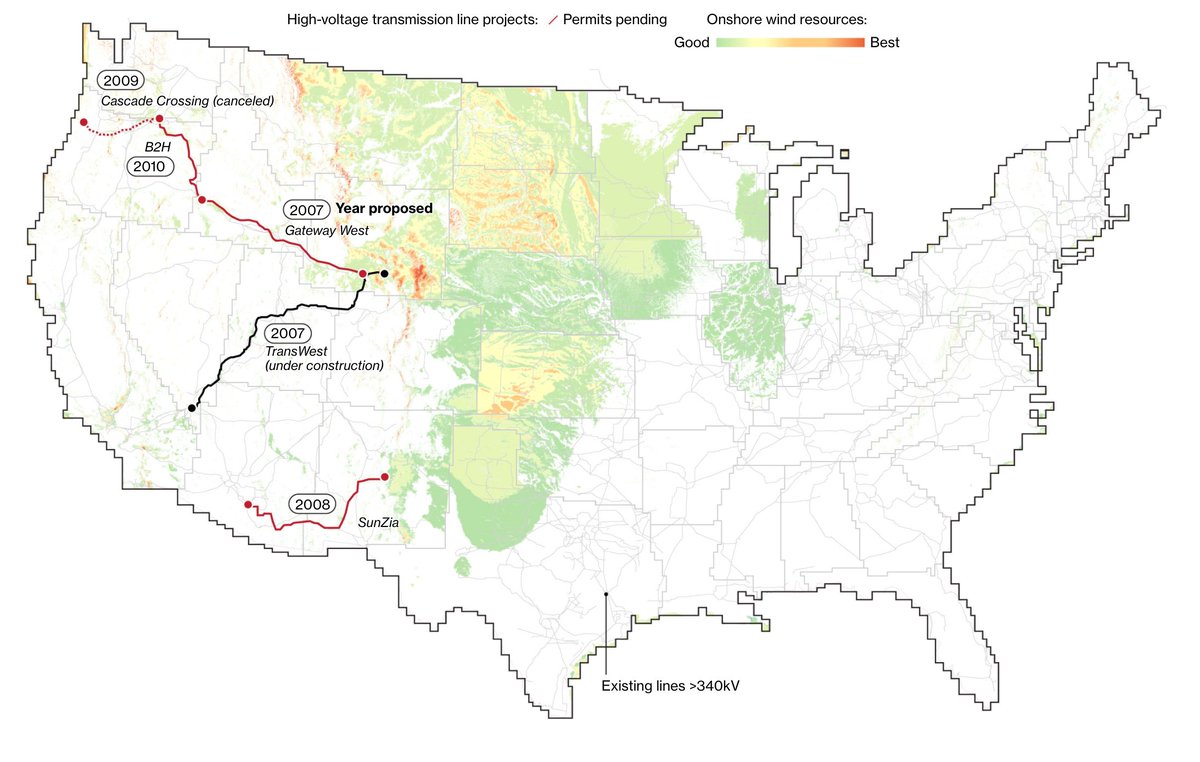
13/ Explore this land use energy puzzle in our interactive: bloom.bg/3b7AzrV
• • •
Missing some Tweet in this thread? You can try to
force a refresh





